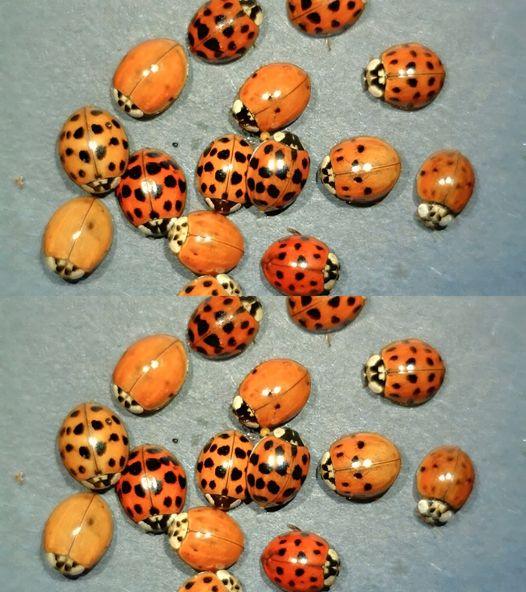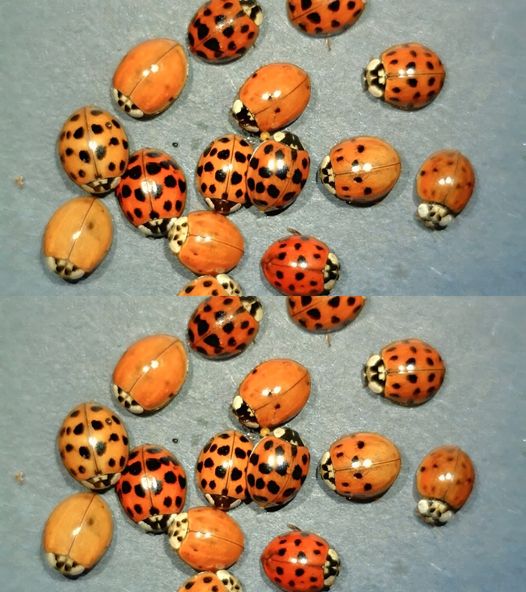What It Means If You See a Yellow Ladybug

There’s something enchanting about spotting a ladybug, isn’t there? The little spots, the bright colors—it’s hard to resist the charm of these tiny creatures. I remember the first time I saw a yellow ladybug. It was a peaceful afternoon, and I was watering my plants when I felt a soft weight land on my arm. At first, I thought it was just a regular ladybug, but then I noticed the color: vibrant yellow, unlike any ladybug I had seen before.
Curiosity took over, and I immediately started asking myself: Is this a rare kind of ladybug? What makes it different from the red ones? I had no idea ladybugs could come in such a range of colors, and I wondered what a yellow ladybug might symbolize. After diving into some research, I uncovered fascinating facts about these bright insects.
Yellow Ladybugs: A Colorful Variation
Yes, yellow ladybugs are absolutely real! In fact, there are more than 5,000 species of ladybugs worldwide, and these little beetles come in a range of colors, from the traditional red to orange, yellow, and even black. While red ladybugs are often the most iconic, yellow ladybugs are just as much a part of the ladybug family.
Yellow ladybugs can be found in various places, including gardens, forests, and even urban areas. But unlike their more common red cousins, they have some unique characteristics, both in appearance and behavior.

What Do Yellow Ladybugs Represent?
Ladybugs, regardless of their color, are often seen as symbols of good luck and positivity. The appearance of a ladybug, especially a yellow one, is thought to bring good fortune, whether you’re hoping for success, health, or happiness. In many cultures, ladybugs are believed to carry a message of joy, growth, and protection.
The vibrant yellow color of the ladybug itself is sometimes associated with optimism, energy, and renewal, much like the bright and sunny days of spring. Some cultures even believe that seeing a yellow ladybug means a shift toward something positive is coming your way.
But what exactly makes a ladybug yellow? While there’s no definitive answer, it’s often tied to specific species or environmental factors. For example, the Psyllobora family of ladybugs, which is known for their yellow hue, tend to appear brighter in certain climates, especially in regions with abundant fungi and mildew.
The Behavior of Yellow Ladybugs
While we typically associate ladybugs with aphids, the tiny insects that can harm plants, yellow ladybugs have a different preference. Many yellow species, particularly those from the Psyllobora family, tend to feed on fungi, including mildew. This makes them valuable contributors to maintaining a healthy garden or ecosystem. While red ladybugs do their part by controlling aphids, yellow ladybugs help manage fungal growth, keeping plant life in balance.
Interestingly, different species of ladybugs are specialized for different environments and food sources. Red ladybugs might focus on aphids and small insects, while yellow ladybugs are more likely to be found nourishing themselves on mildew, playing a quieter yet equally essential role in nature’s delicate balance.
How to Spot a Yellow Ladybug
If you’re lucky enough to spot a yellow ladybug in your garden or while hiking, take a moment to admire this unique insect. Look for its yellow body, which can be solid or speckled, depending on the species. You might also notice its distinct markings, which can be pale spots or lines on its wings.
These ladybugs often fly around, but when they settle, they blend in beautifully with the greenery and flowers around them. You might find them resting on leaves, stems, or even flower petals, where they can often be spotted feeding on mildew.
The Bigger Picture: Ladybugs and Their Role in Nature
Ladybugs, no matter the color, play a vital role in ecosystems. They are natural pest controllers, keeping harmful insects like aphids in check, while also managing fungi and mildew in the environment. This makes them an essential part of maintaining healthy gardens, farms, and natural landscapes.
The beauty of a ladybug, especially the rare yellow one, lies not only in its appearance but also in its contribution to the natural world. It’s a reminder that even the tiniest creatures can make a significant impact, helping to keep ecosystems balanced and healthy.
Conclusion: The Magic of Yellow Ladybugs
So, the next time you spot a yellow ladybug, take a moment to appreciate this special insect. Not only is it a symbol of good luck, but it also plays a crucial role in helping nature thrive. Whether you’re gardening, hiking, or just enjoying the outdoors, a yellow ladybug is a delightful reminder that nature is full of surprises—and sometimes, the smallest things can bring the greatest joy.